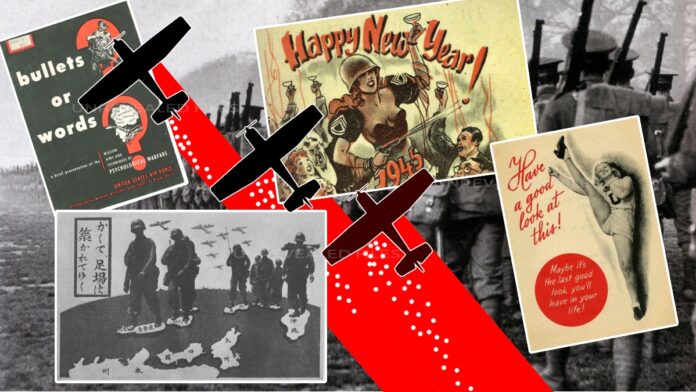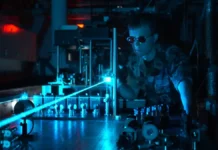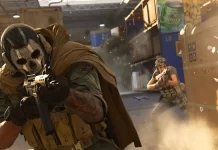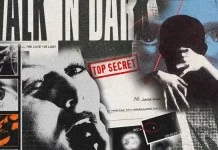
Psychological warfare is one of warfare’s most influential but often underestimated aspects. The way psychological warfare was used throughout history to target the morale and emotions of many soldiers is a clear example of why people are usually made so aware of the horror and carnage of war that they overlook one of the most commonly used weapons.
The leaflets contained images of adultery, a theme that undoubtedly brought a sense of unease among many soldiers, who were dropped and spread by the attackers. Paper filled with propaganda used to reduce the energy and enthusiasm of soldiers and brainwash people to protect them from its effects is the power of psychological warfare when successfully carried out. Psychological warfare focuses on the fears and wants of its targets and exploits them to achieve its goals. learn more
Contents
What is Psychological Warfare?
Psychological warfare is the intentional tactical use of propaganda, threats, and other non-combat strategies to mislead, intimidate, demoralize, or otherwise influence an enemy’s thinking or conduct during wars, war threats, or geopolitical periods of upheaval. Military Information Support Operations (MISO), PsyOps, political warfare, “Hearts and Minds,” and propaganda have all been used to describe psychological warfare (PSYWAR) or the essential characteristics of modern psychological operations (PsyOp). “Any action carried out primarily using psychological tactics to provoke a predetermined psychological reaction in others” is how the term is defined.
Psychological Warfare Tactics
Various strategies can influence a target audience’s value system, belief system, emotions, motives, reasoning, or behavior. For example, it is sometimes paired with black operations or false flag methods to bully confessions or reinforce attitudes and actions conducive to the originator’s intentions. It’s also utilized to break enemy morale by employing techniques that try to lower troops’ psychological states.
Governments, organizations, groups, and individuals are all possible target audiences and are not restricted to the military. Civilians in foreign territories can likewise be targeted by technology, the media, and social media to influence their country’s leadership. Psychological warfare has been documented throughout history. Psychological warfare has been employed frequently in modern times too. Because mass communication allows for direct contact with an enemy population, it has been engaged in various campaigns. Disinformation and misinformation campaigns can be carried out by agents anywhere in the world using adult and adultery content, social media channels, and the internet.
According to the CIA
According to the CIA, The key to a successful PSYOP is knowing what motivates the target. To achieve their goals, psychological warfare campaign planners first try to learn everything they can about the target population’s beliefs, likes, dislikes, strengths, weaknesses, and vulnerabilities. In all cases, the objective of battlefield psychological warfare is to destroy the enemy’s morale, leading them to surrender or defect. The term psychological warfare is most commonly used to refer to the following military tactics:
- Distribute pamphlets or flyers encouraging the enemy to surrender and giving instructions on how to offer safely.
- The visual “shock and awe” of a massive attack employing vast numbers of troops or technologically advanced weapons.
- Sleep deprivation through the continual projection of loud, annoying music or sounds toward enemy troops.
- The threat, whether real or imaginary, of the use of chemical or biological weapons.
- Radio stations were used to broadcast propaganda.
- Random use of snipers, booby traps, and improvised explosive devices (IEDs).
- “False flag” events: False flag incidents, attacks, or operations used to convince the enemy that other nations or groups carried them out.
Former OSS (now CIA) officer Daniel Lerner outlines the U.S. military’s WWII Skyewar operation in his 1949 book Psychological Warfare Against Nazi Germany. Lerner divides propaganda for psychological warfare into three categories:
- White propaganda: The information is accurate and only slightly skewed. The information’s source is cited.
- Grey propaganda: The data is mainly accurate, and no information can be refuted. There are no citations, though.
- Black propaganda: The information is misleading or deceptive and is credited to sources who are not responsible for its fabrication.
Lerner further wrote, “While grey and black propaganda efforts have the most immediate impact, they are also the most dangerous. The target populace eventually recognizes the material as incorrect, discrediting the provider. Credibility is a condition of persuasion; You must first persuade a man to believe what you say before you can get him to do what you want.”
Hearts and Minds
Psychological warfare uses propaganda to affect the values, beliefs, emotions, reasoning, motives, or conduct of its targets in a non-lethal effort to capture “hearts and minds.” Governments, political organizations, advocacy groups, military personnel, and civilians can all be targets of such propaganda tactics.
PSYOP propaganda is just a type of cleverly “weaponized” information that may be transmitted in a variety of ways:
- By verbal communication in a face-to-face setting.
- Television and movies by examples of audiovisual media.
- Shortwave radio broadcasts via the audio-only press, such as Radio Free Europe/Radio Liberty or Radio Havana.
- The visual media includes leaflets, newspapers, books, magazines, and posters.
The message they carry and how well they affect or persuade the target audience is more significant than how these propaganda weapons are delivered.
History of Psychological warfare
Psychological Warfare in Ancient Times
Warlords and leaders have known the value of lowering the morale of opponents. Soldiers in the formidable Roman legions used a tactic of shock and awe to terrorize their enemies by firing swords against their shields in a rhythmic pattern. Persian armies in 525 BC Cats were taken hostage in the Battle of Pelusium to gain a psychological advantage over the Egyptians.
In the 13th century A.D., Genghis Khan, the leader of the Mongolian Empire, ordered each soldier to carry three burning torches at night so that the number of his men would be visible to him. Khan also made arrows with whistles that screamed through the air, terrorizing his enemies. Mongol armies also used severed human heads on the walls of enemy villages to scare the local people, which was probably the most extreme shock and astonishment.
During the American Revolution, the British Army wore colorful uniforms to intimidate the more modestly dressed infantry of George Washington’s Continental Army. But, on the other hand, the bright reds proved to be a disastrous blunder, as they provided clear targets for the even more demoralizing American snipers of Washington.
Psychological Warfare in Modern Times
During World War I
The beginnings of contemporary psychological warfare can be traced mainly to World War I. Western civilizations were becoming more educated and urbanized then, and mass media were available in large-circulation newspapers and posters. Propaganda could also be delivered to the adversary using airborne leaflets or an explosive delivery system such as modified artillery or mortar rounds.
During that time, the British and Germans began to spread propaganda on the domestic and western fronts at the start of the war. The British had several advantages in addition to superior weapons that helped them win the battle for world opinion: they controlled much of the underwater cable system at the time. They had the world’s most prestigious news system. He also had a lot of experience in international and cross-cultural communication. These powers were transferred to the battlefield.
In contrast to the reputation of the German diplomatic services, the British had a diplomatic service that maintained strong connections with numerous nations worldwide. While German attempts to incite revolution in regions of the British Empire, such as Ireland and India, were futile, the British successfully encouraged Arabs to rise against the Ottoman Empire thanks to their significant experience in the Middle East.
David Lloyd George appointed Charles Masterman, a Member of Parliament (MP), to head a Propaganda Agency at Wellington House in August 1914. Arthur Conan Doyle, Ford Madox Ford, G. K. Chesterton, Thomas Hardy, Rudyard Kipling, and H. G. Wells were the literary luminaries hired for the assignment. Over 1,160 leaflets were printed during the war, given to neutral countries and, eventually, to Germany. The Report on Alleged German Outrages of 1915, one of the first significant publications, greatly impacted public opinion worldwide. The booklet detailed actual and claimed atrocities perpetrated by the German Wehrmacht against the Belgian people.
The bureau was absorbed into the new Department of Information in 1917 and expanded into telegraph communications, radio, newspapers, magazines, and motion pictures. Viscount Northcliffe became Director of Propaganda in Enemy Countries in 1918. The department was split between H.G Wells’ propaganda against Germany and Wickham Steed and Robert William Seton-propaganda Watson’s against the Austro-Hungarian Empire; the latter’s efforts focused on the Empire’s lack of ethnic cohesion and stoked the grievances of minorities such as Croats and Slovenes. Nevertheless, it impacted the Austro-Hungarian Army’s final collapse at the Battle of Vittorio Veneto.
Aerial flyers featuring postcards from prisoners of war outlining their human conditions, surrender notices, and general propaganda against the Kaiser and German generals were dropped above German trenches. MI7b had dispersed about 26 million leaflets by the war’s conclusion. After the Germans began shooting down the leaflet-dropping planes, the British developed unknown leaflet balloons that drifted across no-land men. Despite harsh penalties, at least one out of every seven of these pamphlets was not handed in by the soldiers to their superiors. POWs claimed to be disillusioned by propaganda flyers depicting German forces as mere cannon fodder, and General Hindenburg admitted that “unsuspectingly, many thousands took the poison.”
The British began airdropping Le Courrier de l’Air, a regular leaflet newspaper, for civilians in German-occupied France and Belgium, in 1915. The French government assumed media control at the start of the war to conceal negative coverage. They didn’t start using similar strategies for psychological warfare until 1916, when the Maison de la Presse was established. Professor Tonnelat and Jean-Jacques Waltz, an Alsatian artist code-named “Hansi,” commanded the “Service de la Propagande aérienne” (Aerial Propaganda Service). Although the complete publication of U.S. President Woodrow Wilson’s Fourteen Points, which had been substantially edited in German publications, was given via airborne flyers by the French, the French tended to distribute image-only leaflets.
The Central Powers were sluggish in employing these tactics. Still, the Germans successfully convinced the Sultan of the Ottoman Empire to declare ‘holy war,’ or Jihad, against the Western unbelievers, at the commencement of the Conflict. They also attempted to incite insurrection against the British Empire in Ireland, Afghanistan, and India, among other countries. After the toppling of the Tsar, the Germans were most successful in granting Lenin, the Russian revolutionary, free passage aboard a sealed train from Switzerland to Finland. It quickly paid off when the Bolshevik Revolution brought Russia out of the war.
During World War II
Adolf Hitler was heavily influenced by the British psychological warfare tactics used during World War I, and he attributed Germany’s defeat to the effects of this propaganda on the soldiers. In the decades ahead, Hitler grew determined to use mass propaganda to affect the minds of the German people. He persuaded many civilians that his cause was not simply a fad but the way of the future by naming his movement The Third Reich. When Hitler came to power in 1933, Joseph Goebbels was chosen as Propaganda Minister, and he depicted Hitler as a messianic figure who would save Germany. For added effect, Hitler used this with the resonating projections of his orations.
The psychological warfare intended for the Czechoslovak population, government, and, critically, Czechoslovak allies was a significant aspect of Germany’s Fall Grün invasion plan for Czechoslovakia. It was so successful that Germany could seize Czechoslovakia without conducting an all-out war, sustaining only minor losses in a covert war before the Munich Agreement.
The British set up the Political Warfare Executive at the start of World War II to generate and distribute propaganda. Using strong transmitters, broadcasts could be made across Europe. For example, Sefton Delmar organized a successful black propaganda campaign through several stations designed to appeal to German soldiers, as and distribute materials that dented their morale. Thus British Prime Minister Winston Churchill used radio programs to spread anti-German propaganda.
During World War II, the British extensively used deception, creating numerous new techniques and ideas. ‘A’ Force, established in 1940 under the command of Dudley Clarke, and the London Controlling Section(LCS), chartered in 1942 under the control of John Bevan, was the primary protagonists at the time. Clarke invented many military deception methods. His concepts for merging fake battle orders, visual deception, and double agents helped define Allied deception strategy throughout WWII, earning him the moniker “the greatest British deceiver of WWII.”
Many novel psychological warfare methods were developed in the run-up to the Allied assault of Normandy. The plan for Operation Bodyguard outlined a general strategy for deceiving the German high command about the invasion’s actual date and location. Under the London Controlling Section(LCS) supervision, planning began in 1943. At the Tehran Conference, a draught strategy known as Plan Jael was presented to the Allied high command. Operation Fortitude was designed to persuade the Germans that the Allies were more robust than they were. They used fictitious field armies, phony operations to lay the ground for invasion, and leaked information regarding the Allied battle order and war preparations.
In the English Channel, elaborate naval deceptions (Operations Glimmer, Taxable, and Big Drum) were carried out. Small ships and planes simulated invading fleets along the coasts of Pas de Calais, Cap d’Antifer, and the real invasion force’s western flank. At the same time, the RAF was dropping phony paratroopers to the east and west of the Normandy landings as part of Operation Titanic.
Double agents, radio traffic, and visual deception were used to execute the show. By the start of the war, the British “Double Cross” anti-espionage operation had been a significant success, and the LCS could use dual agents to bring back false intelligence about Allied invasion intentions. During the North African War, counterfeit tanks and other military assets, such as visual deception, were used to fabricate. For the bodyguards, simulated hardware, including a simulated landing craft, was created to give the impression that the attack would occur near Calais.
The Normandy landings were a strategic success, as they caught German defenses without difficulty. However, due to Hitler’s subsequent lie, reinforcements from the Calais region were delayed for nearly seven weeks.
During Vietnam War
During the Vietnam War, the U.S. conducted a large-scale psychological warfare campaign. His Phoenix Program was designed to terrorize potential sympathizers and passive supporters, as well as kill members of the National Liberation Front (NLF or Viet Cong) of South Vietnam. On the other hand, The Chiu Hoi program of the South Vietnamese government encouraged NLF defections.
During Recent Times
The CIA used Contra forces extensively to destabilize Nicaragua’s Sandinista government. In addition, the CIA deployed psychological warfare techniques against the Panamanians by transmitting illegal T.V. broadcasts. Through TV Marti, situated in Miami, Florida, the U.S. government has employed propaganda broadcasts against the Cuban government. On the other hand, the Cuban government has effectively jammed TV Marti’s transmission.
The U.S. deployed the shock and awe campaign in the Iraq War to psychologically maim and undermine the Iraqi Army’s will to fight.
More recently, the United States launched the Iraq War in response to the terrorist attacks of September 11, 2001, with a vast “shock and awe” campaign aimed at breaking the Iraqi Army’s desire to fight and protect autocratic leader Saddam Hussein. On March 19, 2003, the U.S. invasion began with two days of nonstop bombing of Baghdad, Iraq’s capital city. Finally, on April 5, U.S. and ally Coalition forces took control of Baghdad, with barely minor resistance from Iraqi forces. The United States declared victory in the Iraq War on April 14, less than a month after the shock and awe invasion began.
The terrorist organization uses social media platforms and other internet sources to conduct psychological campaigns to recruit followers and combatants worldwide in today’s continuing War on Terror.
Social media has made it possible to spread falsehoods on a large scale in cyberspace. Analysts discovered evidence of doctored or deceptive pictures circulated by social media during the Syrian Civil War and the 2014 Russian military intervention in Ukraine, probably with state involvement, according to analysts. Military and government officials have used psychological operations (PSYOPS) and information warfare on social media platforms to control foreign propaganda from countries such as the United States, Russia, and China.
The U.S. and China have used “Cognitive Warfare” in their operations in the South and East China Seas, including demonstrations of power, staged images, and the dissemination of disinformation.
Conclusion
“It is best to maintain one’s army, battalion, company, or five-man squad intact; to smash the enemy’s army, battalion, company, or five-man squad is merely a second-best,” stated the famous Chinese Military Strategist Sun-Tzu. So winning a hundred battles isn’t the pinnacle of perfection; the standard of excellence is subduing the enemy’s Army without fighting”. These words from one of history’s most brilliant military strategists are still relevant today.
In today’s battle, keeping your ranks intact as much as possible is still important. Psychological warfare and operations have played a significant role in capturing enemy prisoners and winning over the hearts and minds of both enemy civilians and combatants in twentieth-century and modern conflicts such as World War II, the Korean Conflict, the Vietnam War, the Persian Gulf War, Operation Enduring Freedom, Operation Iraqi Freedom, and various peacekeeping missions around the world.
“The whole range of political, military, economic, and ideological actions meant to alter the emotions, attitudes, or conduct of friendly or adversary audiences in favor of national objectives,” according to the Army Dictionary and Desk Reference (1999). “The use of propaganda to negatively influence the enemy’s readiness to fight” is how Psychological Warfare (PSYWAR) is defined (Zurick, 1999, p.187). PSYOP is more strategic, with broad, long-term goals supporting overall military plans. In contrast, PSYWAR is more tactical and directed against the adversary, resulting in more immediate, noticeable changes in the enemy’s conduct.
Psychological warfare is simply a tiny part of the enormous scope of Psychological Operations. However, because the word “psychological operations” was not defined until later in some of the publications and acts, these two terms will be used interchangeably for this work.
Outside of the researchers and personnel directly involved in the production or dissemination of products, modern psychological operations, and warfare techniques and procedures may not be well known, but during combat operations on the battlefield, a civilian or fighter may It is challenging to find anyone who has heard a radio broadcast or seen a leaf fall from the sky. Some psychological operations are well known, such as PSYOP, which forced General Manuel Noriega to surrender by playing rock music, and US PSYOP item loudspeakers. Psychological operations units have developed a fine science of knowing what to say and how to operate through trial and error and using contemporary technology. That’s why Sun-Tzu’s words from two thousand years ago still hold today: “The ultimate victory is the defeat of the enemy’s army without fighting.”
Sources
- Qualter, T. H. (2020). Propaganda and psychological warfare. Pickle Partners Publishing.
- Linebarger, P. M. (2015). Psychological warfare. Pickle Partners Publishing.
- “Forces.gc.ca.” Journal.forces.gc.ca.
- Szunyogh, Béla (1955). Psychological warfare; an introduction to ideological propaganda and psychological warfare techniques. United States: William-Frederick Press. p. 13.
- Chekov, S. C.; Bogdanov, S. A. “The Nature and Content of a New-Generation War” (PDF). Military Theory Monthly = Voennaya Mysl. United States: Military Thought: 16. ISSN 0869-5636. Archived from the original (PDF) on February 20, 2015.
- Wall, Tyler (September 2010). U.S. Psychological Warfare and Civilian Targeting. United States: Vanderbilt University. p. 289.
- Kirdemir, Baris (2019). “HOSTILE INFLUENCE AND EMERGING COGNITIVE THREATS IN CYBERSPACE. “Centre for Economics and Foreign Policy Studies.
- George H. Quester (2003). Offense and Defense in the International System. Transaction Publishers.
- Diogenes Laertius. Lives and Opinions of the Eminent Philosophers. Archived from the original.
- Linebarger, Paul Myron Anthony (2006). Psychological Warfare. University of Chicago Press.
- “The Battle for the Mind: German and British Propaganda in the First World War.” Quadri.wordpress.com.
- Taylor, Philip M. (1999). British Propaganda in the Twentieth Century: Selling Democracy. Edinburgh University Press. ISBN 9780748610396.
- Rankin, Nicholas (October 1, 2008). Churchill’s Wizards: The British Genius for Deception, 1914–1945. Faber and Faber.
- Barbier, Mary (October 30, 2007). D-Day Deception: Operation Fortitude and the Normandy Invasion. Greenwood Publishing Group. ISBN 978-0275994792.
- Masterman, John C (1972) [1945]. The Double-Cross System in the War of 1939 to 1945. Australian National University Press. ISBN 978-0-7081-0459-0.
- Ambrose, Stephen E. (1981). “Eisenhower, the Intelligence Community, and the D-Day Invasion.” The Wisconsin Magazine of History. Vol. 64, no. 4. Wisconsin Historical Society. p. 269. ISSN 0043-6534.
- Jan Designs. “Special operation – Phoenix.” Specialoperations.com. Archived from the original on May 12, 2011.
- “Is the U.S. Organizing Salvador-Style Death Squads in Iraq?”. Democracy Now! January 10, 2005.
- “Countering Disinformation: Russia’s Infowar in Ukraine.” The University of Washington. October 25, 2017.
- “Revealed: U.S. spy operation that manipulates social media.” The Guardian. March 17, 2011.
- Adams, W. (2016, March 13). Anti-Venereal Disease Posters of World War 2. RelicRecord.
- Marinelli, R. (2018, September 23). Psychological Warfare, We Are Under Attack! – Rocco Marinelli. Medium.
- Psychological Warfare. (n.d.). Cs.Stanford.Edu.
- World War II American Propaganda Leaflets, Psychological Warfare Manuals, and Documents. (n.d.). Paperlessarchives.
- Looking Back: Sex in psychological warfare | The Psychologist. (n.d.). Thepsychologist.Bps.Org.Uk.
- FORBIDDEN/DIRECTORY LISTING DENIED. (n.d.). RAND.
- Griffith, S. B. (1963). Sun Tzu: The art of war (Vol. 39). London: Oxford University Press.
- Psychological Warfare: Principles for Global Competition | Small Wars Journal. (n.d.). Smallwarsjournal.
FACT CHECK: We strive for accuracy and fairness. But if you see something that doesn’t look right, please Contact us.
DISCLOSURE: This Article may contain affiliate links and Sponsored ads, to know more please read our Privacy Policy.
Stay Updated: Follow our WhatsApp Channel and Telegram Channel.











